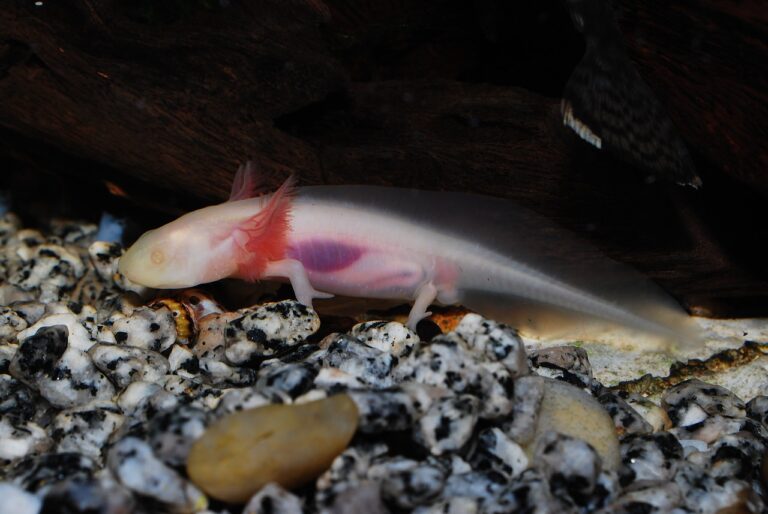Unless you were involved in an unfortunate accident or were born with a congenital condition, namely polydactyly (extra fingers or toes) or symbrachydactyly (fewer than the average number of digits), you have ten fingers and ten toes. Five at the end of each limb. But have you ever wondered why we have five fingers in the first place? The answer is both simple and complicated, but we’ll break it down for you.
Before the nay-sayers come out of the woodwork saying the thumb isn’t a finger… You’re technically correct, but we aren’t playing the semantics game right now. The average number of digits is 20 per human, period. That’s also the average number of digits for most other mammals and some reptiles. Amphibians tend to be a bit different, but no tetrapods (animals with four limbs) have more than five digits on their hands or feet. And for both us and them, it all started with a common ancestor 340 to 360 million years ago.

The ancient reason why we have five fingers
Contrary to what you might believe, fingers and toes may not have evolved on land. They most certainly evolved from fins, as did the rest of the limbs they’re attached to, and fossil records suggest the earliest fingered and toed creatures lived in the water. From that primordial aquatic hellscape, where kill or be killed was the only way of life, comes the one who started it all – the first amphibious species to make the split between amphibians and the rest of terrestrial vertebrate life. Many of the digit-bearing creatures at the time had a large finger count – seven, eight, more. Who knows. The digits were varied, but it’s generally agreed that our common ancestor had five and that those fingers have traveled epochs to reach us.
Scientific American says the great prehistoric limb reduction coincides with the evolution of joints better made for walking on the hard surface of the dry world. More fingers may have been beneficial to water propulsion, but our ancestors solidified the animal kingdom’s reign in the land of open sky.
The number of digits kept reducing down some of the evolutionary lines. There are evolutionary advantages to fewer than five digits, such as the running speed of large birds and dinosaurs. That makes sense, right? Fewer large yet muscular toes can produce some serious power. It’s the five-digit limbs that are more difficult to figure out. It may just be a stroke of luck that our amphibious five-fingered ancestor was the one to lead the evolutionary charge and nothing more. That’s basically how evolution works anyway.

The genetic reason why we have five fingers and why that's the maximum
It may be virtually impossible, outside of random mutation, for any vertebrate on Earth to naturally grow more than five digits on an extremity. This has to do with a set of encoded genes that have made it down the length of the evolutionary ladder to us (and the rest of the tetrapods) from one of our earliest land-roving ancestors. A type of gene called a Hox gene and the number of digital buds developing embryos carry work together to prevent an excessive number of digits, as Clifford J. Tabin explains in Development, a journal of developmental biology. The Hox gene activates the buds and basically tells them to become full-blown digits, and thanks to the lovely DNA tetrapods have carried for hundreds of millions of years, you won’t find more than five standard digital buds anywhere.
It might seem counterintuitive, but cases of polydactyly have actually supported this claim. The extra digits we see in the condition may be extra, but they aren’t unique. Their genetic makeup shows they share embryonic buds with other fingers on the same hand or toes on the same foot. There are only five sets of unique digital DNA per limb, so the only way to get those extra fingers is through an odd type of natural cloning. Crazy, huh?

What evolutionary advantages are there to having five fingers?
This is the big question, isn’t it? We know how we ended up with five terminal digits per limb, but that doesn’t really explain the why of it all. So, let’s get to the bottom of it as best we can.
Both fingers and toes were certainly advantageous on land compared to fins. They provided the power of grip, which is necessary for the uneven terrain of rocky, plaint-covered soil. They’re even more advantageous to climbing. Sure, snakes have no digits at all, and they climb just fine. Just for kicks: We challenge you to find an average snake who’s faster than a monkey or a squirrel at barreling through the treetops.
Where were we? Oh yes… Extra digits also provide more surface area for swimming, which isn’t helpful to finned creatures who can already swim circles around us five-fingered dopes. In the world of terrestrial animals, however, more fingers are helpful for our occasional swims. None of that outright explains why evolution capped us at five. It may seem weird, but evidence suggests there is a reason. Whether or not we know that reason yet is a different story.
Join the Obscurix Newsletter!

A deeper dive
Since those first tetrapods moved onto solid ground, there hasn’t been a single known case of evolution giving a vertebrate more digits, an article in TRENDS in Ecology and Evolution explains. Adaptation tends to take digits away, but never to add them, which means there’s a reason for the five-finger rule out there. And since evolution and adaptation are solely the result of accidental mutations that happen to be advantageous to survival, our current world mustn’t find polydactyly necessary.
Mother Nature’s mysterious qualities are highlighted in our understanding of finger counts, but at the end of the day, it could simply be that we’re looking for an answer that’s more complex than the truth. Animals with fewer fingers than us bipedal primates seem to have lost their extra digits purely because they became unnecessary. So, the most likely explanation – at least the simplest one that makes sense – is that having the minimum number of fingers needed is a benefit in itself.
But wouldn’t more fingers mean even more finger-type benefits? Maybe in a counting contest or to manipulate extremely complex mechanical controls, but that’s about it. Logic suggests the more appendages you have dangling in front of a predator or the more toes you have to snag on debris would mean more digital liability. Which explains a bit of why we shed them.
Five fingers is probably the magic number cap for the complexity of our current joint systems and grasping needs also. If by of some unforeseen evolutionary dilemma we needed a different system of intricate hand and foot structures, then our species – or whatever species replaces ours in a far-off future – may grow an extra digit or two. Or simply die out from the lack of adaptation. But for now, unless you have a congenital condition or unless evolution takes into account our need at Obscurix to use multiple keyboards simultaneously, our species is stuck with the 20 digits we were blessed with.




